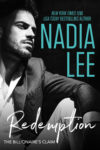23
| Sep 2008 |
If you haven't done so, please read the previous installments titled Identifying Your Site's Purpose and Audience, Go-Live Date, Your Budget, and Your Technical Aptitude, Identifying Your Website Needs and Design Preferences a.k.a. Doing Your Homework and Contacting Designers and Getting Quotes before reading this week's article.
Within a week or so, most of designers you contacted should've responded with quotes and/or questionnaires. You should fill out those questionnaires and surveys as accurately as possible so they know exactly how much to bill you, especially if it's fixed fee work. It's very important to not change the spec in the middle of a fixed fee job because that means either the designer will refuse to make the changes (since it's above and beyond what you said the work would entail) or you'll have to pay more. Some designers might do the extra work for free, but I wouldn't count on it.
If designers bill you by the hour, you should still ask for an estimate based on your spec, so you know whether or not the work can be completed within the budget you set aside for your site.
Before you sign on the dotted line, ask for their service agreement.
Pay close attention to the following:
- Who owns the domain name? This is especially important if your designer registers it for you. Set a definite time frame on when she must start the domain name transfer process should you part ways. (You cannot stipulate that the transfer be completed within a week, etc. because she can only initiate and send appropriate forms, etc. and the rest is up to the registrars, etc.)
- How quickly does she update your site? How often? This is critical if you're planning to retain her services for site maintenance. (Otherwise, it's irrelevant.)
- Who owns the site designs, graphics, files, etc.? If you can't take them with you when you leave her, it's going to be a problem.
- Is the site going to be cross-browser compatible? If the site looks great on Firefox, but not on MSIE or vice versa, you have a problem. The site should look fantastic on Firefox, MSIE and Safari (Mac OS and Windows).
- If the work is unsatisfactory, what remedies are available? I'd say don't hire someone who refuses to refund your money. If the design is unacceptable and/or broken, you shouldn't have to pay. If the designer doesn't update your site as agreed, you shouldn't have to pay.
- Understand the payment terms. Do you have to pay by check, credit card or PayPal? When is the money due? Some designers require that you pay the full amount upfront. Are you comfortable with that? (FYI — Frauke at CrocoDesigns requested that I pay her in full before the work started, and that didn't bother me at all because she's done a lot of design projects for other writers who are very happy with her service. So I knew she wouldn't take the money and run. But I might have hesitated if it had been someone new or someone I didn't know very well, etc. So know your comfort level, which may vary depending on who you're dealing with.)
If you don't understand anything on the service agreement, ASK. Don't assume. Else you're more likely to be frustrated and disappointed. And most importantly, walk away if you aren't comfortable with the terms of the agreement.
Next week, I'll talk about my own experience and lessons learned.









































